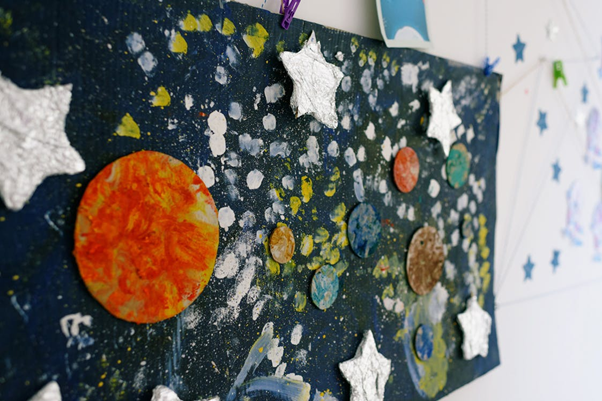Preschoolers and STEM learning- Why it matters

Children are naturally curious. By fostering their interest in STEM fields (science, technology, engineering, and math), you may enhance their innate curiosity. Develop your arithmetic and scientific abilities and concepts by using everyday tasks. Through play and discovery, you may assist your preschoolers in developing their STEM abilities by talking, singing, reading, playing, signing, or utilising other forms of communication, whichever works best for them. Building towers out of blocks or other objects, talking about changes in nature, such as the weather, and encouraging young children to draw, paint, or record their voices describing what they are noticing are all simple ways to foster young children’s innate abilities as scientists and engineers!
The Importance of STEM in Modern Education
Through the interdisciplinary curriculum, STEM is combined into one complete topic. It supports students in applying their knowledge to create, invent, and discover new things while assisting them in handling real-world scenarios. Students who embrace the STEM learning method are more likely to land a job at reputable firms and fulfil their lifelong ambition of making a positive impact on society. There are several instances of stem education where the benefits it provides to pupils are evident. For your youngster, the earlier you begin, the better!
How do you engage preschoolers in STEM learning?
The focus of STEM is discovery. Take your youngster on a co-discovery journey! It is possible to include STEM in children’s purposeful play activities as their learning companions. The following activities can help children acquire STEM skills in preschool.
- Measurement- As children investigate the length, weight, and dimensions of people and objects, they acquire measurement abilities. Children could state that their sister is small and they are large, for instance, while describing a newborn sibling. Teach young children to compare things based on their dimensions, weight, height, length, and other characteristics. Request that they arrange a group of items in either shortest to longest or smallest to greatest size. Children can benefit from your queries concerning measurement, such as “Which object is heavier?” and “Who among us is taller?”
- Counting- Counting with kids using common items throughout the day can help provide the groundwork for addition, subtraction, and, subsequently, multiplication and division. Demonstrate how to do addition by adding interesting objects and subtracting by removing them.
- Spatial Relationships- Children can be taught to compare things’ forms and sizes, space and locations, such as above and below, and direction and movement, such as tracking and anticipating the route of a rolling ball, to help them develop their spatial connection abilities.
- Shapes- Discuss with kids the names of shapes and what distinguishes them (e.g., pentagons, hexagons, and rectangles). Divide the forms into categories based on their characteristics and shape (e.g., four-sided, four-equal-side, or angular shapes).
- Technology- Explore the world of technology with kids by using and studying the basic equipment and tools you see every day. Allow kids to play with tools like hammers and screwdrivers that are used to put things together (such as plastic bottles, chairs, doors, etc.). As co-learners, you may expose children to the world of technology through a variety of games.
Also Read: What is the Actual Value of STEM Education?


